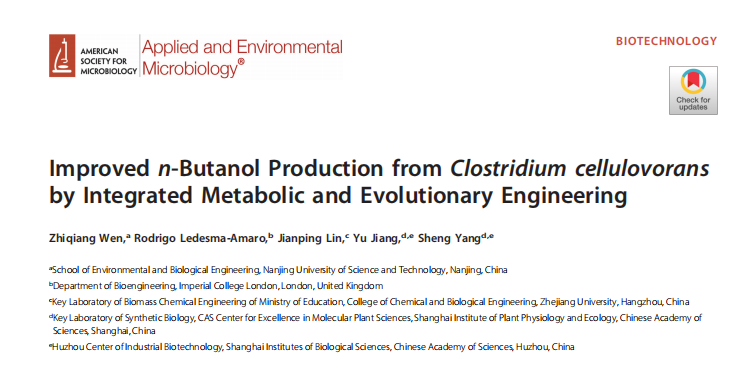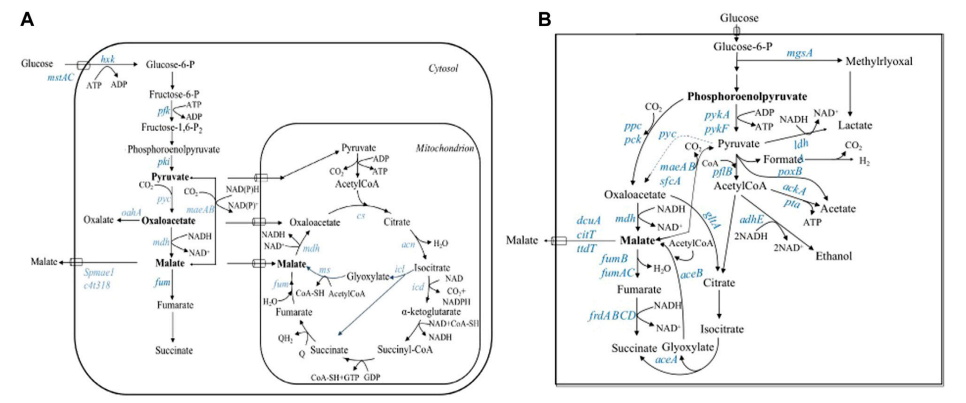CRISPR interference (CRISPRi) is a system based on CRISPR. This editing allows ribonucleoprotein (RNP) complexes to be directed and bind to target DNA, interfering with RNA polymerase (RNAP) to inhibit transcription initiation or elongation. Unlike the CRISPR/Cas9 system, CRISPRi allows for a reduction in gene expression by expressing dCas9 or sgRNA under inducible promoters, thereby exhibiting greater flexibility in gene regulation. The CRISPRi system can effectively silence target genes hundreds of times. In addition, multiple CRISPRi have been practiced in various hosts, using multiple methods to stably express multiple sgRNAs. These technologies that simultaneously inhibit multiple genes have been used to perform more complex tasks, such as reducing toxic intermediates or blocking competitive pathways in bacterial fermentation. However, complete inhibition of gene expression is not always necessary for metabolic engineering. The gene expression level should be precisely controlled to achieve optimal enzyme activity between growth and production pathways, balance intracellular precursor concentration, and avoid the accumulation of toxic intermediates.
| Catalog Number | Product Name | Product Size | Applications | Price |
|---|---|---|---|---|
| GE0013 | Genomic Cleavage Detection Kit | 25 Reactions | Single-tube, isothermal generation of the Cas9-sgRNA constructs. | Online Inquiry |
| GE0014 | Mutation Detection Kit | 25 Reactions | Determination of the targeting efficiency of genome editing. | Online Inquiry |
| GE0015S | T7 Endonuclease I | 250 Units | Function as a DNA endonuclease. | Online Inquiry |
| GE0015L | T7 Endonuclease I | 1,250 Units | Function as a DNA endonuclease. | Online Inquiry |
| GE0016 | Tth Argonaute | 50 pmol | Single-tube, isothermal generation of the Cas9-sgRNA constructs. | Online Inquiry |
Recently, the Sang Woo Seo research group from Seoul University in South Korea published an article titled “CRISPRi mediated tunable control of gene expression level with engineered single guide RNA in Escherichia coli” in Nuclear Acids Research. The authors have developed a tunable CRISPRi system that can regulate gene expression with high precision and predictability, providing a powerful tool for optimizing metabolic pathways.
When the dCas9 sgRNA DNA ternary complex binds together, the CRISPRi system can inhibit gene expression. The author assumes that the inhibition efficiency of the CRISPRi system can be changed to a certain level by regulating the formation of RNP complexes. In order to quantify the inhibitory efficiency of the CRISPRi system, the authors designed a fluorescent reporting system based on a genetic circuit, in which dCas9 of Streptococcus was induced by anhydrous tetracycline (aTc), and both the reporter gene (mCherry) and sgRNA variants were expressed in groups (Figure 1A). Once aTc is added to the culture medium, the dCas9 sgRNA DNA ternary complex blocks the transcription of the reporter gene, and fluorescence levels can indicate the inhibitory efficiency of the CRISPRi system.
The author first investigated how sgRNA mutations in each region affect the inhibitory effect of the CRIPSRi system. A previous research report stated that mutations in stem ring 1 (sg_mut01 and sg_mut02) significantly reduced Cas9 nuclease activity, while mutations in stem ring 2 (sg_mut03) or stem ring 3 (sg_mut04) did not affect their nuclease activity. However, in the CRISPRi system, compared to the wild-type sgRNA (sg_WT), all five sgRNA variants had little effect on inhibition efficiency, and each variant showed fluorescence levels of 2% to 4% compared to the positive control (sg-PC) without spacer regions (Figure 1B). These results indicate that compared to the CRISPR/Cas9 system, the formation of dCas9 sgRNA complexes is less sensitive to sequence modifications in the stem ring 1 region of the CRISPRi system. The author assumes that removing regions related to complex stability can serve as further control for multiple levels of expression. For this purpose, the author constructed a truncated sgRNA (sg_trcSL1) lacking a connector, stem ring 2, and stem ring 3. When tested in the CRISPRi system, this defective mutant exhibited an 8% fluorescence level compared to sg-PC, indicating that it can still bind to dCas9 and inhibit the genes of interest to a certain extent, even if the stability of the ternary complex is reduced (Figure 1B). This result supports the observation that sg_trcSL1 exhibits a significant decrease in nuclease activity in the CRISPR/Cas9 system, and only slightly affects the binding affinity in the CRISPRi system.

Figure 1: System construction and the impact of sgRNA mutations on inhibition efficiency.
Next, the author used sg_trcSL1 as a template to construct a random library (4 nt in the four ring region and 4 nt in the 5 ‘and 3’ flanking regions, respectively), further reducing the efficiency of complex formation between sgRNA and dCas9 (Figure 2A). The author applied a two-step strategy to obtain various sgRNA mutants, covering all inhibition efficiencies between sg_WT (fully inhibited state) and sg-PC (non inhibited state). The author divided the original library into smaller libraries with different fluorescence intensity ranges, and then separately identified the fluorescence of each sgRNA variant from the smaller libraries. The fluorescence distribution of the original library obtained by flow cytometry is almost identical to that of sg-PC (Figure 2B). After three consecutive sorting steps, each library (high, medium, and low) had median fluorescence levels of 63%, 24%, and 14%, respectively, compared to sg-PC (Figure 2B). 82 colonies were isolated from these smaller libraries, with fluorescence levels ranging from 8% to 104% (Figure 2C). These results indicate that the mutated four ring and its sgRNA flanking region can regulate the binding affinity between dCas9 and sgRNA to achieve various inhibitory efficiencies.

Figure 2: Structure of sgRNA library and screening of library.
Due to the fact that regulating the quantity of dCas9 or sgRNA may alter the inhibitory efficiency of the CRISPRi system, the authors examined the effect of dCas9 and sgRNA quantity on inhibitory efficiency. The author tested the performance of the system under different conditions by using ten sgRNA mutants (sg_trcSL1c1 to sg_trcSL1c10) to alter the quantity of dCas9 and sgRNA. When expressing different quantities of dCas9, the inhibition efficiency slightly changes (Figure 3A). The author set the inducer concentration to 500 ng/ml to fully supply dCas9 for further applications, such as multi gene regulation. The author’s adjustable CRISPRi system allows for precise regulation of inhibition efficiency through sgRNA variants. Through this method, multiple genes with different levels of inhibition can be targeted simultaneously.

Figure 3: Adjustable CRISPRi system characteristics.
Redistributing metabolic flux is an important process in metabolic engineering to maximize the yield of target products. The author’s system can precisely control gene expression, so the author chose the biosynthesis pathway of violet as the model system for pathway redistribution. Purple pigment is a deep purple indole derivative compound initially produced by purple colored bacteria (Figure 4A). This compound is synthesized from l-tryptophan through five enzymes encoded by vioA, vioB, vioE, vioD, and vioC. In addition to violet, other indole derivatives can also be produced, such as violet violet, deoxygenated violet, and different colored deoxygenated violet violet (Figure 4A). The author expressed the biosynthesis pathway of violet under the IPTG inducible promoter and designed different sg_trcSL1 variants to target vioD to redirect flux. It can effectively regulate the expression of vioD at the transcriptional level (Figure 4B). VioC was inhibited by sg_WT and showed high variability, but when calculated from the standard curve, the absolute copy number remained at a lower level (>100 times) compared to other genes. On the contrary, the expression of other unregulated enzymes (vioA, vioB, and vioE) in the violet pathway remains unchanged. These results indicate that the author’s system can specifically target and regulate the expression of individual genes without affecting other genes in the pathway. Previous studies have shown that the yield of each product in any unit can be predicted by a linear combination of promoter strengths for each gene involved in the biosynthesis pathway of violet. This logarithmic linear regression model is also effective in the author’s system, and the increased vioD transcripts are correlated with the increased PV production (Figure 4B).
Lycopene is a high-value carotenoid with strong antioxidant properties and has different applications in various industries. It is synthesized by FPP through a series of enzymatic reactions from crtE, crtB, and crtI (Figure 4C). GAP precursors are essential not only for the MEP pathway but also for the glycolytic pathway. Research has shown that increasing the GAP pool can enhance the yield of lycopene. Therefore, the author used five systems for gapA, including three sg_trcSL1 systems displaying different inhibition efficiencies (sg_trcSL1c2, sg_trcSL1c5, and sg_trcSL1c6), sg-PC, and sg_WT. However, gapA is an essential gene that cannot be completely knocked out. The traditional CRISPRi inhibition of gapA using sg_WT is not successful. On the other hand, the adjustable CRISPRi system was used to achieve multi-level inhibition of gapA gene expression without growth defects, and compared with the strain that fully expressed the gapA gene after 15 hours of cultivation, the lycopene production of sg_trcSL1c6 increased by 2.7 times (Figure 4D). Overall, these results indicate that

Figure 4: Application of the adjustable CRISPRi system in the biosynthesis pathway of violet.
Overall, the author has designed an adjustable CRISPRi system that can precisely control the required level of gene expression. The author successfully applied the system to redirect the metabolic flux of interest in the biosynthesis pathway of violet, thereby producing indole derivatives in predictable proportions. In addition, studies have shown that the use of adjustable CRISPRi can increase lycopene production by 2.7 times, highlighting the multifunctionality of the author’s system in increasing the production of other valuable compounds.









